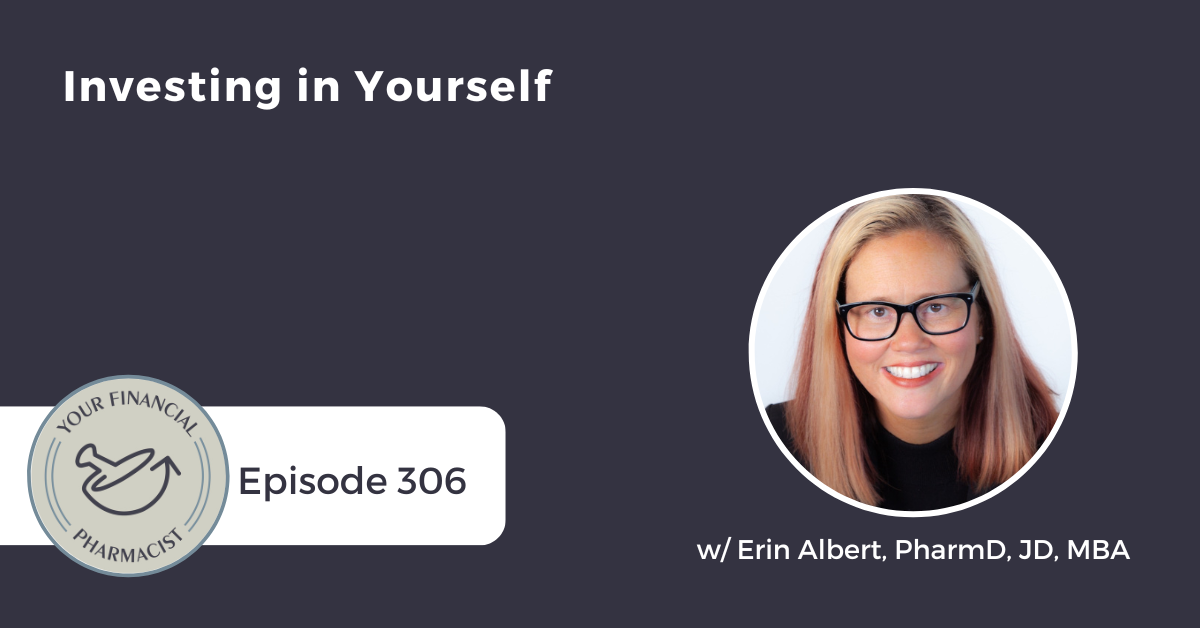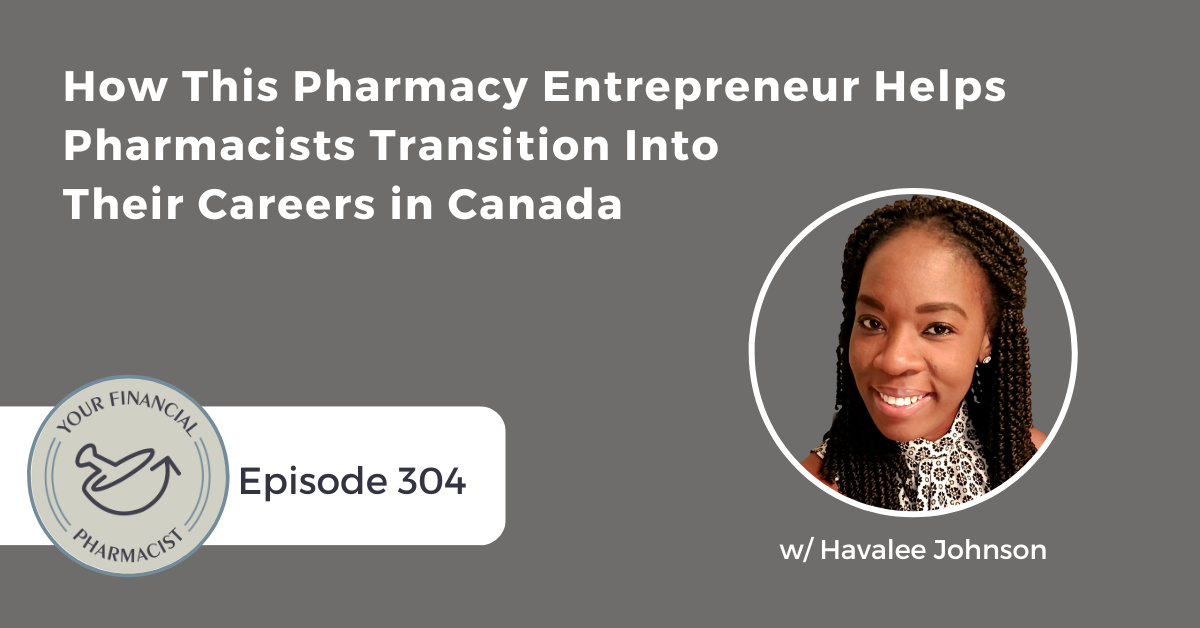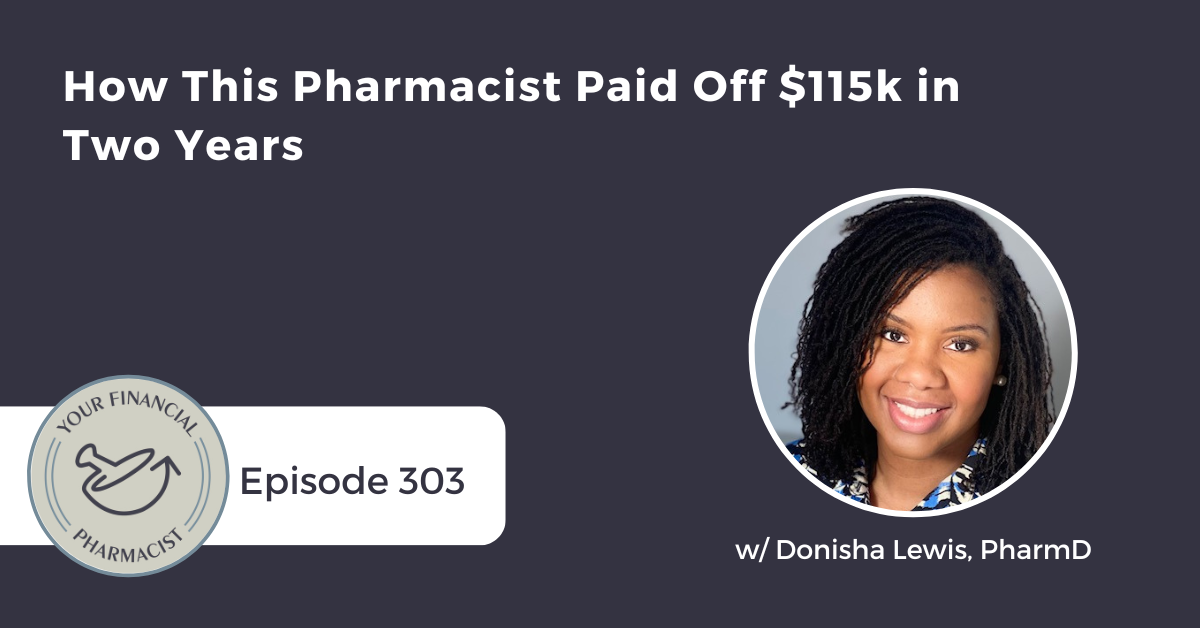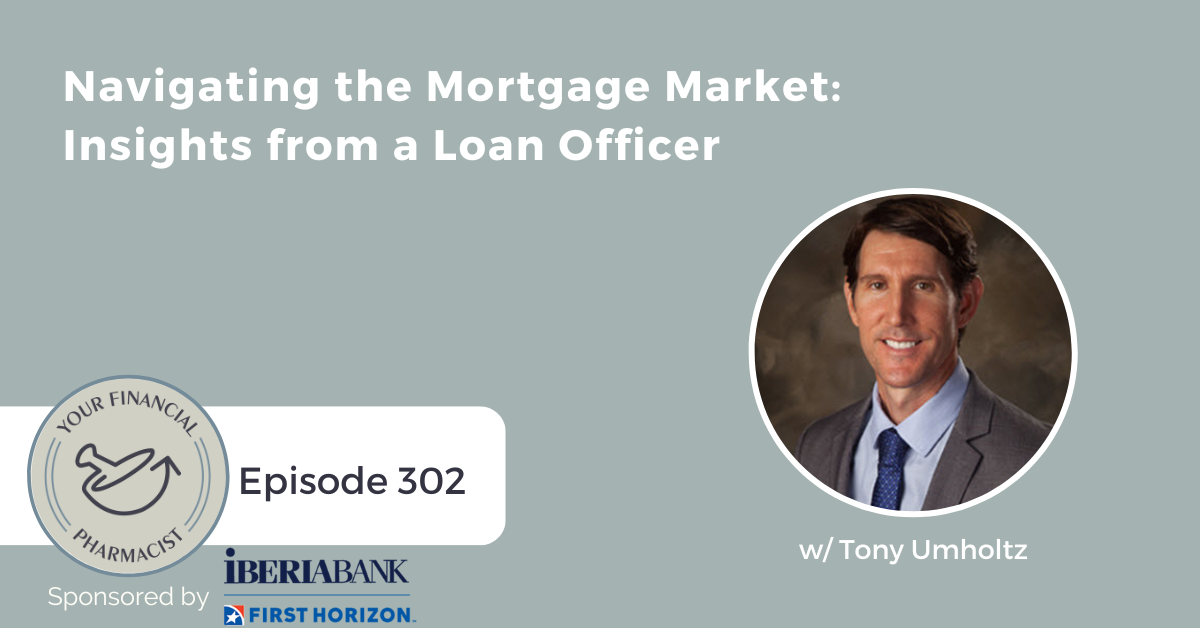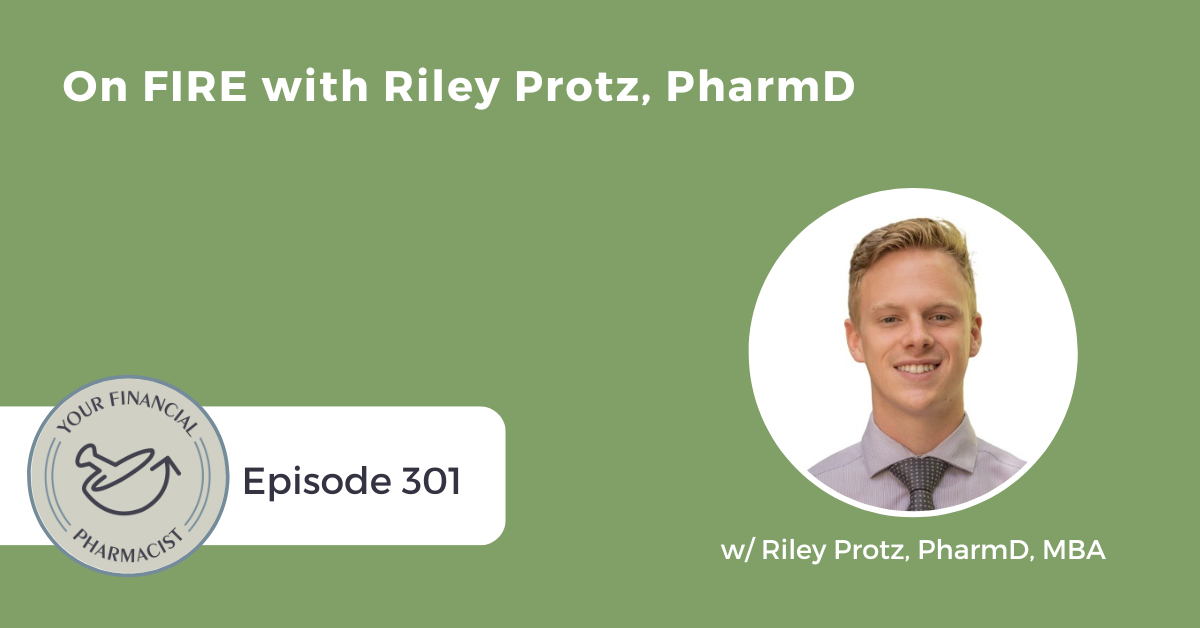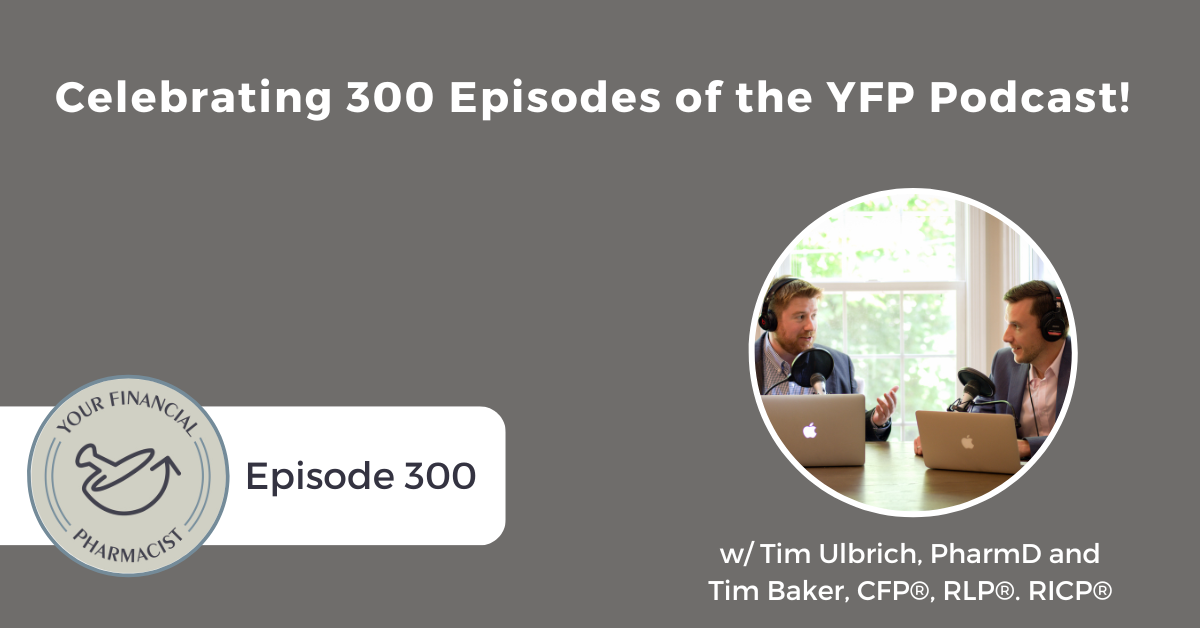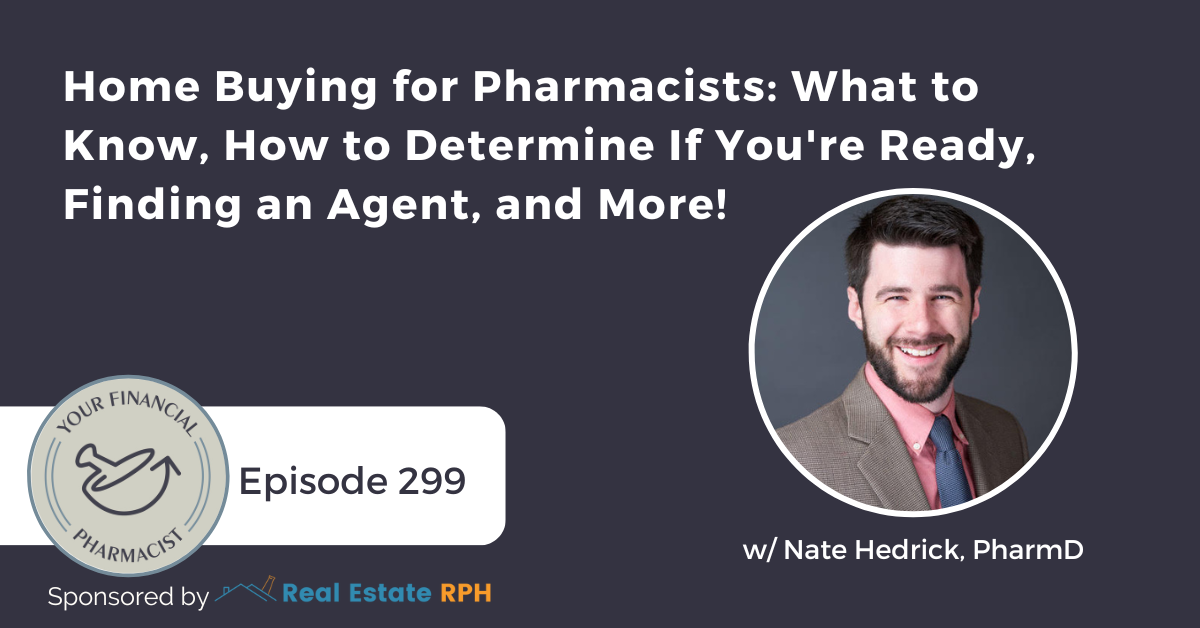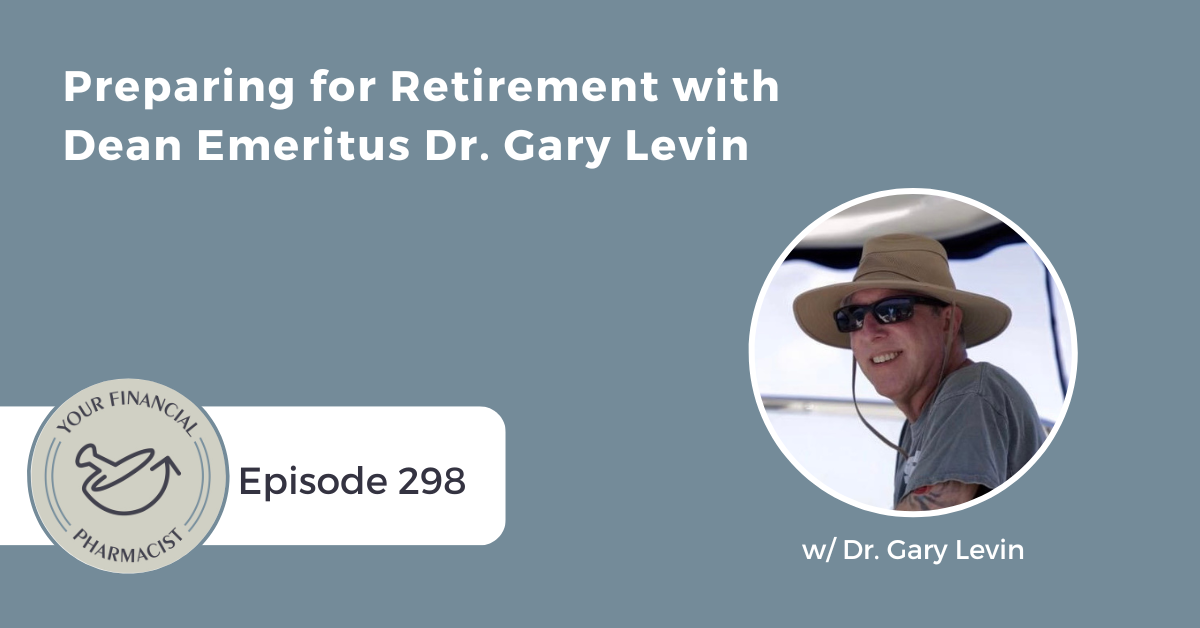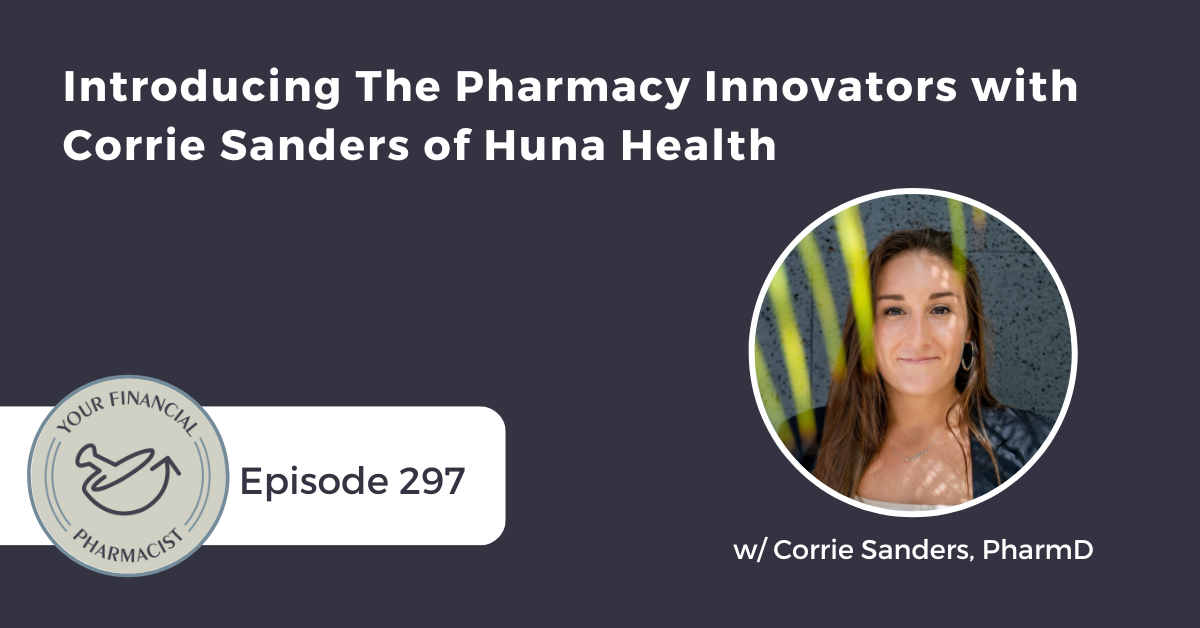Erin Albert, PharmD, JD, MBA joins the YFP podcast to discuss why you should approach your career development like you do your financial investments.
About Today’s Guest
Erin L. Albert, PharmD, JD, MBA is Vice President of Pharmacy Relations and Chief Privacy Officer at Mark Cuban Cost Plus Drug Company, PBC. She is both a pharmacist and an attorney. Prior to joining Mark Cuban, she worked in a variety of pharmacy roles, including pharmacy benefits, taught pharmacy students at Butler University College of Pharmacy and Health Sciences for over a decade, served as a director of content for two different ACPE accredited Continuing Pharmacy Education programs, consulted in both fee for service and managed care Medicaid, worked in the pharmaceutical industry in a variety of roles—(including pharmacovigilance, clinical trials, medical affairs, and medical marketing), and in community practice pharmacy as a staff pharmacist and pharmacist-in-charge. She is also a freelance writer and author of over a dozen books, and podcaster (at The Edutainer Podcast.)
Episode Summary
Investing your money is one thing, but people often overlook the fact that they should also be investing in themselves. An article in the Wall Street Journal in late 2022 suggested that “The Best Investment to Make in 2023 Is in Yourself” and that people should treat their own career development like they do their investment portfolios. To discuss, we are joined by Erin Albert, PharmD, JD, MBA. Erin is the vice president of pharmacy relations and the chief privacy officer at Mark Cuban Cost Plus Drug Company. In addition to being a pharmacist, she’s an attorney, author, and podcaster. She explains the concept of investing in oneself by building a portfolio of how we spend our time and money and how she applies this to her own life. She talks about the five categories that make up her professional development portfolio, how often she revisits this framework, and what it looks like to pay herself dividends along the way. She also talks about what she looks for in education and training programs and how her personal brand and network have accelerated the achievement of her goals.
Key Points From the Episode
- An introduction to today’s guest Erin Albert, PharmD, JD, MBA and a brief summary of her career journey.
- How she came to work at the Mark Cuban Cost Plus Drug Company.
- The concept of investing in oneself by building a portfolio of how we spend our time and money.
- How Erin applies the strategy of developing a long-term vision to her own life.
- Why she revisits this framework or portfolio annually.
- How she became comfortable with the uncomfortable and was able to jump at the opportunity to work for Cost Plus Drugs.
- What a “jar of awesome” is and how Erin celebrates the small wins.
- The value of traditional and non-traditional education and training programs in the pharmacy profession.
- Why you should create the course you’re looking for if you cannot find it.
- How Erin’s personal brand and network have accelerated her personal and professional goals.
Episode Highlights
“My portfolio looks like a five-way intersection. It’s really your strengths, your values, what you love to do, what the world needs, and what someone will actually pay you to do.” — Erin Albert [0:10:11]
“You have to keep investing in your own personal learning and development so that when you do get that blank piece of paper, you can run with it.” — Erin Albert [0:18:07]
“When I’m looking at different educational opportunities for myself, it’s not so much about formal learning anymore. It’s much more important to me to look at the content and who is teaching it than anything else.” — Erin Albert [0:24:57]
“Whatever your niche is, you should be sharing it because part of the journey in becoming a leader or a thought leader is that you’re sharing what you’re learning along the way.” — Erin Albert [0:30:47]
Links Mentioned in Today’s Episode
- Erin Albert
- Mark Cuban Cost Plus Drugs Company
- Shark Tank
- “The Best Investment to Make in 2023 Is in Yourself”
- Book: Find Your Unicorn Space by Eve Rodsky]
- Book: Strengths Finder by Don Clifton
- The Team Cuban Card
- Survey: Team Cuban Benefits Card
- YFP Planning: Fee-Only Financial Planning for Pharmacists
- YFP Disclaimer
Episode Transcript
[INTRODUCTION]
[00:00:00] TU: Hey, everybody. Tim Ulbrich here. Thank you for listening to the YFP Podcast, where each week we strive to inspire and encourage you on your path towards achieving financial freedom.
This week, I welcome Erin Albert on to the show to talk about investing in yourself. Erin is the vice president of pharmacy relations and chief privacy officer at Mark Cuban Cost Plus Drugs Company. In addition to being a pharmacist, she’s an attorney, author, and podcaster. Prior to joining Mark Cuban, she worked in a variety of roles, including pharmacy benefits, taught pharmacy students at Butler University College of Pharmacy for over a decade, served as a director of content for two different ACPE-accredited CPE programs, consulted in both fee-for-service and managed care Medicaid, worked in the pharmaceutical industry in a variety of roles, and in community practice as a staff pharmacist and pharmacist in charge.
Before we jump into my interview with Erin, I recognize that many of you may not be aware of the work that the team at YFP Planning does in working one-on-one with more than 280 households in 40-plus days. YFP planning offers fee-only high-touch financial planning that is customized for the pharmacy professional. If you’re interested in learning more about how working one-on-one with a certified financial planner may help you achieve your financial goals, you can book a free discovery call at yfpplanning.com.
Whether or not YFP Planning’s financial planning services are a good fit for you, know that we appreciate your support of this podcast and our mission to help pharmacists achieve financial freedom.
[INTERVIEW]
[0:01:33] TU: Erin, welcome to the show.
[0:01:34] EA: Thanks, Tim. It’s great to be here.
[0:01:35] TU: Well, it’s been a long time in the making. I feel like I’ve been following you on social media, LinkedIn in particular for some time. I feel like, I know you at this point in time, which is weird. I guess social media can have that effect, right?
[0:01:46] EA: Yeah. I think it’s a good effect, though, right? Like, I love podcasting and listening to you as well. A lot of our fellow pharmacist podcasters are doing their thing now, which I think is great. I think we need to have more voices on pharmacy and in pharmacy and in healthcare, because let’s be honest, there’s a lot of work to be done.
[0:02:06] TU: That’s right. Well, speaking of work to be done, today we’re going to be talking about investing in yourself. A different take than the normal Xs and Os of the financial plan. Erin, before we dig into that topic, give us a brief summary of your career journey, including the current role that you have as the vice president of pharmacy relations, chief pharmacy officer at Mark Cuban Cost Plus Drugs.
[0:02:29] EA: Yeah. Thanks again, Tim, for having me on the show. My career started right here in Indiana, where I’ve gone full circle and ended back up at. I went to Butler University College of Pharmacy and Health Sciences. I won’t say when because now I’m too old to own up to that. I really always loved chemistry and science and was one of those nerdy little kids that geeked out going to the library. I played some musical instruments in high school, I always had my paws on a lot of different things in a good way.
When I chose pharmacy, I knew that I was staying in-state. It was between that other pharmacy school, Purdue and Butler. Now we have Manchester here in Indiana. I chose Butler. I loved pharmacy but ran screaming from the building after five years. I had had enough education thinking, “Oh, I’m going to go launch my career and I’m never going to go back to school again.” Well, that was not what happened in a good way, in a good way, right?
My life took me out to the Philadelphia area back in the late 90s when pharmaceutical manufacturers were having their heyday out there. Had a lot of great experiences on the pharma manufacturer side, working in a lot of roles, but came home here to Indiana, continued to do that in industry. Then somehow, I wound up in academia, taught at Butler University again, right back where I started in the school, the College of Pharmacy and Health Sciences. I did that for 10 years. I had the hair-brained idea to go to law school at night, also went to business school at night.
All my graduate programs were always when I was a working professional, doing it part-time, either in the evenings or on the side. Lo and behold, I was working for a broker advisor here in Indiana called Apex Benefits, and shout out to them. I love them. They’re still all my peeps. At the time, one of the drug manufacturers was pulling their copay coupon at the beginning of a new plan year. I reached out to, lo and behold, Mark Cuban Cost Plus Drugs, because they had an incredible price on Imatnib. Imatinib as you know is chemo. It is not low cost.
I was trying to figure out a way to get our patients access to that drug at that low cost. Suddenly, they reached out, the CEO and I had a chat, and all of a sudden, I had a job offer. I do believe that somehow Kismet played a role in all this because each and every day I get the opportunity and the honor to use my pharmacist brain, my lawyer brain, and my MBA marketing brain in a variety of different things that I’m doing here at Mark Cuban Cost Plus. I’ve been here almost a year now, although it feels time is a relative thing post-pandemic.
Now I serve as our vice president of pharmacy relations and chief privacy officer here at Mark Cuban. My colleagues are fantastic and phenomenal to work with. I work now for the smartest individual, Alex Oshmyansky that I think I’ve ever had the honor to work for. He’s an MD Ph.D. Oxford guy. He’s got a Ph.D. in math, super brilliant. Then of course we can’t leave out Mr. Cuban. He’s been great to work with, as well. He is very entrenched in the business, by the way, in a very good way, because pharmacy benefits are not easy to understand, but he’s a lifelong learner too. I’ll just put it out there that he’s very inspirational because he’s always asking questions and he always wants to know what the ramifications of everything are in our daily operations.
[0:06:38] TU: I got that vibe. I’m an avid Shark Tank watcher, right? As I suspect many people may be familiar with Mark Cuban through that or through his ownership of a variety of companies, including professional sports teams. I’ve gotten that vibe in watching Shark Tank of that he is constantly asking questions. He’s always wanting to learn, always wanting to grow. I think that’s a sign of not only a good business owner, but that’s a sign of someone who’s looking to stretch themselves, understand more. Of course, as we can have more information, we can make better decisions along the way. It’s really neat, Erin, to see you as a pharmacist representing our profession inside of an organization like Mark Cuban Cost Plus is obviously is having, I think, a positive disruption on our healthcare system. Exciting to see that evolution.
We’ll talk about some of the behaviors around professional development the educational path you’ve taken, the networking that you’ve obviously done, which has led to an opportunity like this. We talk often on the show about where to put your investments, but we haven’t yet discussed this concept of investing in yourself. To guide this conversation, Erin, you shared an article from the Wall Street Journal back at the end of 2022 that we’ll link to in the show notes, that article is called “The Best Investment to Make is in Yourself in 2023”.
To set the stage for our conversation, let me read an excerpt from the article and then I’m going to get your input. That expert excerpt is this, “Just as we buy stocks and bonds to generate financial growth, we can build a portfolio of how we spend our time and money now that pays off in the months and years ahead.” Erin, I like to think that I’ve been pretty intentional about professional development, but I honestly can’t say I’ve been as intentional and as structured about it as I have been in building my own long-term investing plan. This feels to me like a big mindset shift and a reframe. Would you agree?
[0:08:36] EA: I do. I really love that article. We like to focus on our investment portfolios. Now I think more than any other time, maybe. Inflation has gone up or looking to think about retirement in some instances, there’s been huge dips in the stock market, but that whole approach to looking at your bank and your money and dollars in the bank versus treating your own career development like that, having a portfolio, having different educational opportunities, networking with other individuals, and treating it much like you would your own investment portfolio, I think is a really great parallel to what we all should be doing as professionals inside particularly healthcare and pharmacy.
[0:09:25] TU: Yeah. I think as I read that article, Erin, this concept of setting a long-term vision seems to be a really important piece to then be able to inform the steps that we’re going to take today, right, and in the short-term to get that long-term vision. They talk about in the article some big questions that we want to be thinking about that inform that long-term vision and lead to those shorter-term action items. Questions like, what is my purpose? What is my passion? What am I doing this for? As I’ve mentioned already, I see you as someone who’s very intentional about goal-setting and taking action. Share with us about how you apply this strategy of developing a long-term vision with short-term actionable steps. How do you implement this in your own life and your own professional development?
[0:10:11] EA: Sure. My portfolio looks like, almost a five-way intersection. It’s really your strengths, your values, what you love to do, what the world needs, and what someone will actually pay you to do. Okay. That’s the framework for my own portfolio. I call it an ikigai or the French call it a raison d’etre. It’s your reason for being, right? That to me is the long-term legacy game that we’re all trying to play, I think.
We all are incumbent upon ourselves to find out what that meaning is for each of us individually. When I coach students or other professionals, one of the first questions I ask them is, what are your values? What do you personally value and hold above all other values? I think that has to be the starting point for unearthing whatever your ikigai or your raison d’etre is. Understanding what is personally important and valuable to you.
One of my values, my personal values, is working on the frontiers of knowledge, new knowledge. I am a huge junkie of the future of whatever, XYZ, constantly looking ahead, looking at the best hits, and figuring out how to pull those best ideas into today to make the future happen today. Values are super important. I think the other piece that, frankly, a lot of pharmacy schools, I think, have done a better job in the last few years is assessing your personal strengths, knowing what those are. There are some great tools out there like strengths finder, for example, where you can figure out what your strengths are.
What you love to do like my favorite question there is thinking about what was the last day that time went by and you didn’t even notice? Like what were you doing that day? Because those are hints and clues for you to figure out what your purpose in life is. Also, things like, what the world needs. Right now we’re constantly trying to fill gaps. What are those gaps? What does the world still need? Let’s be honest, particularly in healthcare, there’s a lot of opportunity there.
Then what somebody will actually pay you to do? I think, is important too. Because otherwise, it’s a hobby. It’s something that maybe you’re personally interested in, curious about. I just read a recent book called Unicorn Space that talks about this element as well. These might not be in your day job, but by having this curiosity about different things, that actually can be another mechanism by which you invest in your lifelong learning portfolio and drag better ideas for your curiosities into your day job as well. That’s the framework that I utilize when I look at my own purpose or calling.
[0:13:13] TU: I love that, Erin. I love the visual of the intersection of those things, right? I think so often when I talk with folks, you may see people, “Hey, I’m making a great income, but I’m feeling that dissatisfaction, because of these other things are missing.” Right? That you mentioned as you think about values and some of the impacts forth or we don’t want it to be a hobby. I might be doing those other things, but it’s not paying the bills or it’s not valued in the way that it’s being compensated, so there’s that rub there.
The intersection of these things coming together is beautiful. One of the things I used to share often with students when I was doing some career development is what you alluded to is, “Hey, what are you doing when you’re spending time and you don’t realize time is passing? What are those things or that you could spend a day, a week, whatever, working on a project and you feel more energized through that work”, right? Then on the other side of the coin, what are those things that you do in a day? obviously, all jobs, all work are going to come with some element, some percentage of these things, but that time can be even limited, but it drains you, right? It pulls the energy away from you.
Being aware and observing those things, aligning those with your strengths, understanding what the market value isn’t going to pay for. I think the intersection of those is a really powerful visual. My follow-up to you with that is how often do you revisit that framework? What is the process for you to look at that portfolio? Is it something you do in an annual goal setting to track your progress to rebalance, if you will, right? If we’re off track. How do you evaluate your progress towards achieving that intersection?
[0:14:50] EA: Yeah. I think that’s twofold for me. The first point is annually. I know it’s cheesy to set goals or basé to do that this year or any year for that matter, especially post-pandemic, right? Because we never know what tomorrow is going to bring. But still, I need that order and structure in my life, so usually, the month of December preceding the new year, I really sit down, put pen to paper, and start thinking about what do I really want to bring to my portfolio, my learning portfolio, my life portfolio in the coming year?
The other point in time when I do it is when I change jobs and things derail in a good way, right? Because you weren’t expecting necessarily that great opportunity to come your way, but if you’re offered a seat on a rocket ship, you get on and then you start asking questions later. You don’t ponder things and let the great opportunity pass you by. I mean, with Cost Plus Drugs, I didn’t even have a job description when I rolled in. I basically got keys to the building and they told me to write my job description and it’s changed a couple of times since I’ve been here.
I think any time you have your life’s work or whatever is really, truly important to you at the time and there’s been radical change, I think that’s always a good time to do a little bit of janitorial, if you will, on your portfolio to make sure that you’re still headed in the right direction for you based upon your new situation.
[0:16:22] TU: Erin, the example you just gave of coming to Cost Plus, not having a job description, getting the keys, you figure it out as you go. I think for many folks listening, they may not be comfortable with that type of an opportunity, that type of an unknown. Your mindset around that is really interesting to me. Where do you attribute? How have you become comfortable with the uncomfortable that you say yes to an opportunity like that, knowing that there’s certainly going to be some bumps along the way?
[0:16:49] EA: That’s a really good question. I think where your roots came from like, I grew up, I think we were talking off camera a little bit about or before we recorded about the fact that we grew up in entrepreneurial households. I mean, I grew up in an entrepreneurial household. I watch Shark Tank. I’m a junkie when it comes to Shark Tank like I taught a Shark Tank, literally at Butler University. We had an entrepreneurship in healthcare and life sciences course and their final exam in that course was to do a Shark Tank.
I am a controlled or conservative risk taker. For me, I think it’s empowering to be able to have a blank piece of paper or a blank slate to create and craft a job description or even your portfolio in life, what you really want to accomplish, what you’re here to do, because we’re all here for a reason. I know that sounds really woo-woo, but it’s true. For me, I love to just get keys to the building and I’ll figure it out one way or the other, but I get that sometimes people can be a little more reserved or conservative and they want the checklist, right? I think post-pandemic, if nothing else, it’s taught us that sometimes there isn’t a roadmap. There isn’t a checklist. You have to keep investing in your own personal learning and development so when you do get that blank piece of paper, you can run with it.
[0:18:17] TU: Yeah. I would encourage any listeners out there that are managers, supervisors, ask yourself, what could I be doing to create that culture that allows people to figure it out and to get in the messy middle? That’s one of our core values, Erin, at YFP, is that we really want to have the team comfortable with taking some calculated risks, right? Obviously, there’s discernment there. Sometimes that means we get it right. Sometimes that means, we don’t and permission to fail and to fail quickly and to get back up on our feet and move forward.
I think anything we can do from a management leadership perspective to foster that culture and to role model that is going to allow us to hopefully make the strides that we need to make in pharmacy, but also in healthcare at large. I love that. I love the concept of getting comfortable with the uncomfortable. I want to shift gears. One of the things Erin, this article talks about is how valuable it can be to pay ourselves dividends along the way, as a way to really start to reap some of the rewards and to keep the motivation going.
Admittedly, I am terrible at this. I’m someone who will set big audacious goals and I’m all in grinding it out, waiting to celebrate until the finish line is achieved. The problem with this approach is that we know that the feelings associated with achievement, right, with getting to that “finish line” are short-lived. We can be spending a significant amount of time grinding and grinding some more only to have that feeling of accomplishment be fleeting right in that moment. One, I’d love to hear your thoughts on that and what strategies you implement for these type of micro rewards along the way, these dividends.
[0:20:02] EA: I call that the hedonic treadmill, right, like especially pharmacists. There’s something about us that we love to set big, hairy, audacious goals. Then when we get there, it’s like, what’s next? For me, especially later in my career, I started focusing on the tiny wins, because really, that’s what it’s all about at the end of the day. You get to that big picture, final countdown, whether it’s you’re graduating from pharmacy school or you’re getting that new cool job. It’s not about the big wins. It’s about the tiny wins.
I’ll try to look visually around my day, mentally around my day, every day to sit down and think about, okay, what was the tiny win of the day? What was the best part of my day? Then even keeping what I call a “jar of awesome” around. I have a little 365-day calendar, each day I pull the tag off, and then whatever that was, that particular day, I’ll write it on that calendar posting and I’ll jam it in my “jar of awesome”. Then at the end of the year, I go back and look at it and say, “Wow.” Especially on those bad days, right? When you’re really struggling to find that tiny win, you have something to go back to and say, “Okay, it’s not really that bad after all.”
We’ve had a tremendous amount of tiny wins along the way, XYZ year, so it’s really about the little things. It’s not about the big picture stuff. I know we all need to have those large goals, those lofty goals to get to, but don’t forget the tiny wins along the way as well, because I think they’re equally, if not more important.
[0:21:49] TU: Yeah. I really like that. What I’m hearing there is some type of process or system or activity behavior, whatever we want to call it, that really captures those wins, captures the things that we’re grateful for in the moment because it’s easy to lose sight of those. One I started doing recently and shout out to my partner, Tim Baker, who gave me this idea is, I’ll do a morning gratitude exercise five minutes, micro things of the day that I’m grateful for from the day before. I’ve started organizing those by day. I can see it by year. For example, on March 15th, I can see it 2023, 2022, and the goal would be over time you can look back several years. That has been really powerful.
Even things just one year ago, where it’s like, “Ah, I totally lost sight of that.” Like in that day, that was such an important win. I find it to be very grounding for exactly what you’re saying enjoying those small wins and join the day in the moments and being present in that. Resisting against that urge to be focusing on these massive goals that may or may not come in the future. That to be a fleeting reward when it does come. love what you had to share there.
I want to pick your brain on disruption and education. You and I both were former academics. I feel like we’re academics at heart always, but considering the disruption we’re seeing in education with expanded accessibility at a lower cost, some really referring to things like the massive online open courses. It feels like we’re stuck between a traditional model that values the more structured training programs defined by degrees and credentials, right, think PharmD, residency board certification.
All the while, those structured programs may not be as customizable, affordable, or relatable as other learning opportunities that are coming out there. As someone, Erin, who holds four degrees, if I follow the journey correctly, Bachelors, PharmD, MBA, JD, but also values ongoing professional development and learning, right? Books, podcasts, courses, etc. what do you see as the future of the value of traditional and non-traditional education and training programs in our profession?
[0:24:01] EA: Yeah. I think the MOOCs to your point earlier are a wonderful opportunity to dip your toe into the pool before you go to the deep end with another degree. Okay. I see it as a pool, right? You’ve got all these different lanes in the pool that you can dip into. You can start with a certificate, you could start with an online course, you could talk to your mentor and get their wise advice or sage advice. You should, by the way, have multiple mentors, not just one.
You could formalize that education and go get a graduate degree if you wanted to, or even shift and get a different bachelor’s degree. You could even go get your Ph.D. if you wanted to. I think the range of opportunity has never been better historically than it is right now. I think we have to seize that opportunity. When I’m looking at different educational opportunities for myself, I got to tell you, it’s not so much about formal learning anymore. It’s much more important to me to look at the content and who is teaching it than anything else. I will pay gobs of money myself. I will invest in myself. No questions asked, if it’s content that I cannot get from other sources and the person or the thought leader that’s teaching that content is truly a leader in their arena.
Whether that’s pharmacy benefits, that’s a certain therapeutic area like oncology or whatever the case may be, business ownership as an independent pharmacist. We now have more choices than ever. Sometimes that’s a little bit overwhelming, right? That’s why, again, you want to tap back into your mentor network, and your mentors can be peers, too, by the way, which I think is really important and talk to your network and find out, “Hey, well, that’s really the best program out there in XYZ and go from there?” I think it’s actually a beautiful thing, a great thing that we have a range of different types of ways that we can learn, both live and online or on demand.
[0:26:14] TU: Yeah. I think that’s a great point, right? The access information is greater than it’s ever been, which can be a blessing and a curse. I see it as a blessing, but it can be so overwhelming, whether it’s things we just pick up and read, whether it’s taking online courses, whether it’s more formal certifications or academic degree programs. There are so many different pathways that are out there. I think having a system, having a filter, whether that’s mentors, whether that’s going back to the things you mentioned earlier in the intersection of those five different areas and trying to figure out where do these align and fit in, do they align or do they fit in? But really asking yourself those questions before you make that investment of time and money, right?
I think that’s the thing I was encouraging people is you’re thinking about, especially a traditional degree, right? MBA, MS, whatever, post-PharmD like, what’s the return on investment of both your time and money? I think with so many options that are now out there having some type of criteria, some type of framework, some type of funnel to be able to really filter those opportunities.
[0:27:17] EA: Exactly. I use that mindset when I published and wrote all my books, Toni Morrison, who’s another famous author, said, “If I’m trying to find a book that I want to read and it’s not available, that’s the hint from the universe that I need to write it.” An example sometimes means you have to create the course. In that case, I’ll give you a recent example as immediate past president of the American Society for Pharmacy Law, one of the things that I noticed was as a mid-career professional, there is nothing out there for people like me who are passionate about the intersection of pharmacy and law and leveling up on their own leadership.
We decided to create the diplomat for the American Society for Pharmacy Law program. It is a one-year longitudinal mentor-mentee program that lets you go down a rabbit hole and study an area of pharmacy and law that you are personally passionate about. You present it at the subsequent annual meeting. You get paired with a mentor. You have a leadership seminar series. All those components have swirled together to bring the very best professionals in the realms of pharmacy and law together, to bring along the next generation of leaders in that arena that are mid-career right now.
That didn’t exist before, but darn it, I wanted it like, I wanted to be part of that. We decided to build it. Now we’re getting ready to launch our second class at our next annual meeting coming this fall. We’ve already got a lot of interest in it. Sometimes I have to say as much as I hate to say it because this extra work, if you’re looking around for something and you cannot find it, maybe that’s the sign that you need to create it. Then, in turn, that’s going to wrap right into your own learning portfolio.
[0:29:08] TU: It’s a great example, great example. Since we’re talking about professional development, I want to tap in your expertise as someone that I view as a role model in personal branding and networking. I think my observation, Erin, is that you have intentionally yet authentically built a personal brand that has obviously led to networking and other opportunities. My question for you is, how has your ability to develop the personal brand that you’ve built to develop the network that you’ve built? How has that accelerated your personal and professional goals?
[0:29:43] EA: I mean, that’s everything. I think one of the first touch points that I made with Mark Cuban Cost Plus, I didn’t talk about this earlier, but Mr. Cuban himself was being interviewed by one of the news editors at LinkedIn on a live stream, now that LinkedIn has live stream video. They took one of my posts that I compared and contrasted drug prices that are out in the internet, Cost Plus, and some other sites and integrated it into the live stream. I had no idea that they were going to do that. I was shocked.
I still don’t know how they figured that out, but I think that was definitely part of the conversation that led me to joining Mark Cuban Cost Plus, as well. I guess, the best advice there is number one, you can’t fake it. If you’re passionate about something, you should be sharing it with the rest of the world, if you can. My world is nerdy. I do pharmacy benefits, pharmacy law and career development.
Those are my three niches, but whatever your niche is, you should be sharing it, because part of the journey in becoming a leader or a thought leader in that arena is that you’re sharing what you’re learning along the way. There’s always that opportunity, I think. It’s super important to share that. I mean, that’s part of being a good learner. In academia, as you know, we always say, see one, do one, teach one, right?
[0:31:11] TU: Yup. Absolutely. What a tangible example of personal branding leading to an opportunity. That’s a really neat one. Erin, this has been awesome. I love this topic, investing in yourself. Your passion comes through the microphone, certainly. I’m excited to get this out to our community to be thinking about how does investing in yourself accelerate your personal goals? I do think there’s a return on investment financially, as well. There’s a connection there to the financial plan. As we wrap up, though, where’s the best place for our listeners to go to connect with you and to learn more about the work that you’re doing?
[0:31:46] EA: Sure. LinkedIn is a great place. Right now, at Cost Plus Drugs, we’re very focused on what we’re calling The Team Cuban Benefits Card and the Cuban Pharmacy Affiliate Network. I’m excited to partner with independent pharmacies across the US, right now to work with them into Brick-and-Mortar pharmacies and get our amazing pricing into their pharmacies, yet offered them a solution where they’re getting paid and reimbursed for their awesome services and our patients can get their prescription drugs closer to home. If you’re an independent pharmacist, I personally love to talk to you. Please connect to me on LinkedIn.
Every Saturday morning that I am home, I also do a quick 20-minute live stream on LinkedIn. That’s audio only. You do not want to see this camera face. This face is not ready for camera at 9 am, Eastern time on Saturday mornings, but I do, do a quick update there on pharmacy benefits, pharmacy law and career development for the week incoming. Then I do publish a newsletter around that after we have our little morning coffee clutch and chat. If you want to check me out over there, I do that live stream again every Saturday morning at 9 am, Eastern.
[0:33:04] TU: Awesome. Great stuff. Hopefully, you all connect and follow Erin on LinkedIn. We’ll link to that in the show notes. Erin, this has been fantastic. Thank you so much for taking the time. I appreciate it.
[0:33:12] EA: Yeah. Best of success to you, Tim. I know it’s hard to leave Academia where it’s seemingly “stable” to go do your own thing, but you’re brave doing it, and kudos to you for that.
[0:33:23] TU: Thank you, so much. Appreciate that.
[END OF INTERVIEW]
[0:33:25] TU: As we conclude this week’s podcast, an important reminder that the content on this show has provided you for informational purposes only and is not intended to provide and should not be relied on for investment or any other advice. Information in the podcast and corresponding material should not be construed as a solicitation or offer to buy or sell any investment or related financial products. We urge listeners to consult with a financial advisor with respect to any investment.
Furthermore, the information contained in our archive, newsletters, blog posts, and podcasts is not updated and may not be accurate at the time you listen to it on the podcast. Opinions and analyses expressed herein are solely those of your financial pharmacists, unless otherwise noted, and constitute judgments as of the dates published. Such information may contain forward-looking statements, which are not intended to be guarantees of future events. Actual results could differ materially from those anticipated in the forward-looking statements. For more information, please visit yourfinancialpharmacist.com/disclaimer.
Thank you again for your support of the Your Financial Pharmacist Podcast. Have a great rest of your week.
[END]
Current Student Loan Refinance Offers
Note: Referral fees from affiliate links in this table are sent to the non-profit YFP Gives. | Bonus | Starting Rates | About | YFP Gives accepts advertising compensation from companies that appear on this site, which impacts the location and order in which brands (and/or their products) are presented, and also impacts the score that is assigned to it. Company lists on this page DO NOT imply endorsement. We do not feature all providers on the market. |
$750* Loans ≥150K = $750* ≥50K-150k = $300 | Fixed: 4.89%+ APR (with autopay) | A marketplace that compares multiple lenders that are credit unions and local banks | ||
$500* Loans ≥50K = $500 | Variable: 4.99%+ (with autopay)* Fixed: 4.96%+ (with autopay)** Read rates and terms at SplashFinancial.com | Splash is a marketplace with loans available from an exclusive network of credit unions and banks as well as U-Fi, Laurenl Road, and PenFed |
Recent Posts
[pt_view id=”f651872qnv”]

